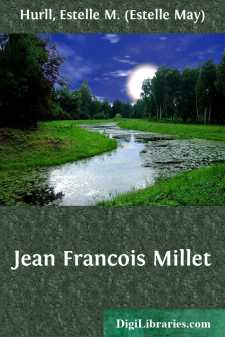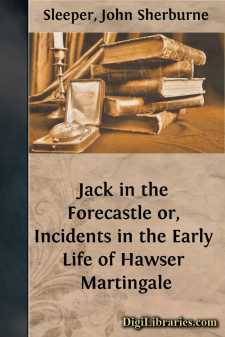Non-Classifiable
- Non-Classifiable 1768
Non-Classifiable Books
Sort by:
Mr Harwood and Alethea in Sherwood Forest, and Jack Deane’s First Adventure. Romantic Sherwood! Its pristine glories since the days when bold Robin Hood and his merrie men held sway within its borders, and levied taxes from the passers-by, had sadly dwindled even in the year 1696, when our history commences. The woodman’s axe had been busy and the plough had gone over the land, and mansions and...
more...
JOHN BROWN: A RETROSPECT. Nearly two thousand years ago, at the hour of noon, a motley throng of people might have been seen pouring forth from the gates of a far Eastern city and moving towards a hill called Calvary. Amidst soldiers and civilians, both friends and foes, the central figure is that of a man scarcely more than thirty years of age. He has all the attributes, in form and features, of true...
more...
by:
Jacob Kainen
PREFACE John Baptist Jackson has received little recognition as an artist. This is not surprising if we remember that originality in a woodcutter was not considered a virtue until quite recently. We can now see that he was more important than earlier critics had realized. He was the most adventurous and ambitious of earlier woodcutters and a trailblazer in turning his art resolutely in the direction of...
more...
CHAPTER I. Never perhaps in modern times had a country sunk so low as France, when, in the year 1420, the treaty of Troyes was signed. Henry V. of England had made himself master of nearly the whole kingdom; and although the treaty only conferred the title of Regent of France on the English sovereign during the lifetime of the imbecile Charles VI., Henry was assured in the near future of the full...
more...
CHAPTER I. MY BIRTH AND HOME—MY PRETTY COUSIN—ACCIDENT TO THE "KITTYWICH"—JOURNEY TO GUERNSEY—PLEADING TO BECOME A CRUSOE—MY WISH GRANTED—OUTFIT SECURED—SAIL TO JETHOU. That Crusoe of Crusoes, Alexander Selkirk, as I am aware, commences his entertaining history with his birth and parentage, and as I am also a Crusoe, although a very minor adventurer, I may as well follow the...
more...
INTRODUCTION I. ON MILLET'S CHARACTER AS AN ARTIST The distinctive features of Millet's art are so marked that the most inexperienced observer easily identifies his work. As a painter of rustic subjects, he is unlike any other artists who have entered the same field, even those who have taken his own themes. We get at the heart of the matter when we say that Millet derived his art directly...
more...
PREFACESince1870-1, when J. E. Austen Leighpublished hisMemoir of Jane Austen, considerable additions have been made to the stock of information available for her biographers. Of these fresh sources of knowledge the set of letters from Jane to Cassandra, edited by Lord Brabourne, has been by far the most important. These letters are invaluable asmémoires pour servir;although they cover only the...
more...
by:
Louis How
EARLY TRAINING James Buchanan Eads was born in Lawrenceburg, Indiana, May 23, 1820. Both the Eads family, who came from Maryland, and his mother's people, the Buchanans, who were originally Irish, were gentlefolk; but James's father never was very prosperous. The son, however, went to school, and he showed early a very special love for machinery, observing with great interest everything of...
more...
INTRODUCTION TO redeem the monotony of plain surfaces has ever been the aim of all the arts, but especially that of the needle, which being the oldest expression of decorative intention, has, from the earliest time, been very dependent on its groundwork for its ultimate results. This is particularly the case in embroideries of the type of what is commonly known as Jacobean, where the ground fabric is...
more...
Chapter I. FAREWELL TO NEW ENGLAND I was born towards the close of the last century, in a village pleasantly situated on the banks of the Merrimack, in Massachusetts. For the satisfaction of the curious, and the edification of the genealogist, I will state that my ancestors came to this country from England in the middle of the seventeenth century. Why they left their native land to seek an asylum on...
more...











